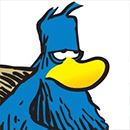Science & Technology
/Knowledge

Shark researchers show what could happen to Cape Cod if great whites disappear
What would happen if great white sharks disappear from Cape Cod?
A new shark study shows the potential “ecosystem consequences” when the apex predator is no longer in a region, as a leading shark researcher stresses that great whites are keeping balance in the local ecosystem.
Shark scientists have zeroed in on South Africa over recent ...Read more

Love dinosaurs? Here's what makes Central Valley a fossil hotspot
SACRAMENTO, Calif. — In 1936, a Central Valley teenager made an incredible discovery.
Gustine High School student Allan Bennison dug up the fossilized remains of a hadrosaurus — a duck-billed dinosaur that lived in North America during the Late Cretaceous Period, The Fresno Bee reported in 2013.
The bones, which Bennison found in Del ...Read more
More logging in Georgia's national forests? It's possible under a new directive
ATLANTA — Few states in the eastern U.S. are home to more national forestry lands than Georgia.
North Georgia’s Chattahoochee National Forest district spans 750,000 acres in portions of 18 counties. It is home to old growth trees, wild and scenic rivers, and the southern terminus of the famed Appalachian Trail.
Farther south, the Oconee ...Read more

Colorado's gray wolves roamed closer to metro Denver, farther south in mountains
DENVER — Colorado’s collared gray wolves continued to travel widely last month — even roaming in watersheds that reach into the western portions of metro Denver, according to a new map released this week by state wildlife officials.
Reintroduced wolves were tracked in watersheds from the Utah border in Mesa County, in the west, to the ...Read more

Audit finds 55-year lapse in DNR's reporting of land inventory
The Department of Natural Resources does a good job selecting land to acquire, but the process takes too long and the agency has gone 55 years without the legislatively required reporting of an inventory of DNR-managed land, according to the Office of the Legislative Auditor.
The agency’s failure to publicly report its land holdings, as ...Read more
Maryland air pollution continues to worsen, report finds
BALTIMORE — Maryland counties’ air pollution continues to worsen, especially in Baltimore County, according to a newly published report, which found more ozone, smog and fine particles aloft across the state.
In its most recent “State of the Air” report, documenting air quality data from 2021 to 2023, the American Lung Association found...Read more
Judges doubt protection of Georgia wetland under federal law
ATLANTA — Federal appellate judges seemed doubtful Thursday that a wetland on St. Simons Island is protected by the Clean Water Act under a test recently created by the U.S. Supreme Court.
During a hearing in Atlanta, 11th Circuit judges indicated they might give two Georgia environmental organizations and a member who lives in Glynn County a...Read more

Secretive 'Dark Eagle' hypersonic missile launches from Cape Canaveral
After a successful test from Cape Canaveral Space Force Station last December, the Army on Thursday officially named its long-range hypersonic weapon “Dark Eagle.” The system designed to “disintegrate adversary capabilities” was at it again Friday morning.
Images posted to social media showed the missile launch from Canaveral’s Space ...Read more

Trump moves to ramp up deep-sea mining for critical minerals
WASHINGTON — President Donald Trump has signed an executive order intended to accelerate offshore mining and open new opportunities for extracting critical materials from the ocean floor despite the objections of environmentalists.
The measure directs the Commerce Department to speed up reviewing and issuing permits for exploration and ...Read more
Recent whales washed up in Orange and Los Angeles counties show evidence of poisoning from toxic algae
LOS ANGELES — Of the four whales that have washed up on Orange and Los Angeles county beaches this year, two had high levels of domoic acid poisoning confirmed in their systems, leading marine mammal experts to say it caused their deaths.
Since February, marine rescue centers have been overwhelmed responding to sea lions, dolphins and birds ...Read more

Sea creatures keep dying in California waters. Now researchers have an answer
Sea creatures keep showing up dead in California waters, and researchers may have an answer as to why.
It has to do with their food.
One of the largest algae blooms in Southern California has been linked to the death of two whales, a humpback whale and a minke whale, according to an April 23 news release by the Pacific Marine Mammal Center (...Read more
Rare Fijian iguanas, rescued from wildlife traffickers in Spain, arrive at San Diego Zoo
After a whirlwind journey around the world, during which they were nabbed, rescued and quarantined, eight critically endangered Fijian iguanas have finally arrived at their new home at the San Diego Zoo.
The iguanas will fit right in at the zoo, which is home to the largest captive colony of these reptiles and is leading genetic research ...Read more

Will pollen allergies get worse in South Florida as climate turns hotter?
It’s that time of the year when yellow pollen coats everything from windshields to streets. It’s not just from flowers and shrubs. Pollen that piles up under oak and pine trees also add some of the sneeziest allergens to the mix.
Some studies suggest that warmer temperatures — climate change is driving Miami’s temperatures up if you ...Read more

Despite progress, Los Angeles is nation's smoggiest city for 25th time in 26 years
LOS ANGELES — Despite decades of progress in reducing air pollution, Los Angeles is still the nation's smoggiest city, according to a report released Wednesday by the American Lung Assn.
The association's annual "State of the Air" report noted that Los Angeles held on to the infamous title for the 25th time even though the number of unhealthy...Read more

High-powered solar cells are poised to replace batteries
The basic technology behind Ambient Photonics’s solar cells is so simple that it’s routinely assembled as a high school science experiment. In labs across the U.S., students sandwich blackberries’ potent pigment between glass to create dye-sensitized cells capable of harnessing energy from the sun.
Ambient Photonics’s process is more ...Read more

Court halts coyote killings on some of Nevada's public lands
LAS VEGAS — A federal appeals court ordered the U.S. Department of Agriculture to partially halt its statewide program that kills off coyotes, mountain lions and other livestock predators until a more thorough environmental review is completed.
Since the 1880s, some version of the USDA’s Wildlife Services program has worked to protect ...Read more

Gadgets: An all-in-one pizza oven/toaster/air fryer
Every time I step into the kitchen, I leave my comfort zone. So, when entering the kitchen, I asked, “What do chocolate chip cookies, pizza, chicken, beef and toasted bagels have in common?” In addition to being some of my favorite foods, they can all be cooked in Gourmia's new all-in-one pizza oven/toaster/air fryer.
The multi-functional...Read more

Review: In ‘Atomfall,’ Rebellion takes a risk and players reap the rewards
When games become multimillion-dollar endeavors, it’s rare for a studio to take bold risks. Many stick to what they know, polishing successful formulas or occasionally revamping them. If they do come up with a new project, it usually stays within their wheelhouse.
That’s why it’s remarkable that Rebellion Developments made “Atomfall.�...Read more

Jim Rossman: New policies at Social Security aim to keep you safer
If you are of a certain age, you pay pretty close attention to any news about our Social Security system.
There have been a lot of headlines lately about fewer employees available to help on the phone and in person, but this latest news has to do with verifying your identity and strengthening the process to prove your identity.
According to ...Read more

The Webb Telescope is making incredible discoveries. It may go dark
The political news these days is enough to make some Chicagoans wish they were a million miles away. But consider this: Even in the depths of space, there’s no escape from politics.
The $10 billion James Webb Space Telescope is literally parked 1 million miles away. In the nearly three years since it became operational, “Webb,” as it’s ...Read more
Popular Stories
- The Webb Telescope is making incredible discoveries. It may go dark
- Love dinosaurs? Here's what makes Central Valley a fossil hotspot
- Steelhead trout rescued from Palisades fire spawn in their new Santa Barbara County home
- Audit finds 55-year lapse in DNR's reporting of land inventory
- Shark researchers show what could happen to Cape Cod if great whites disappear





